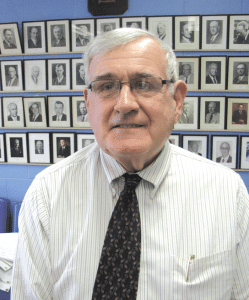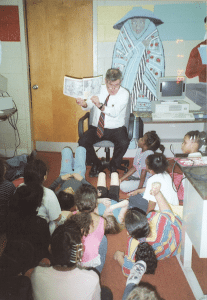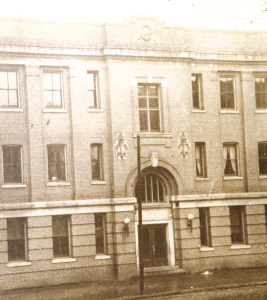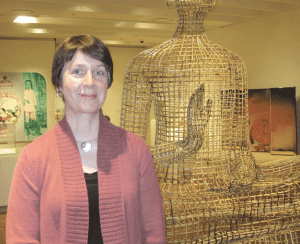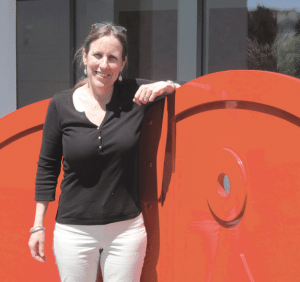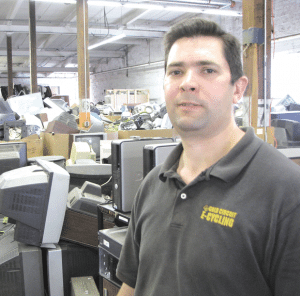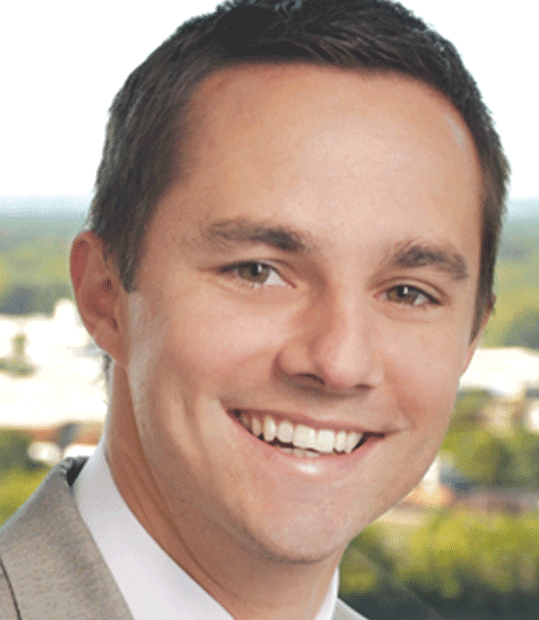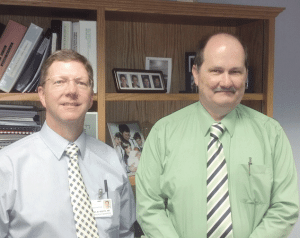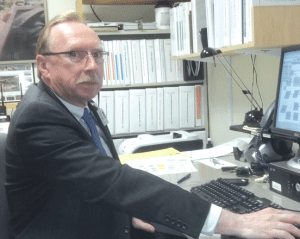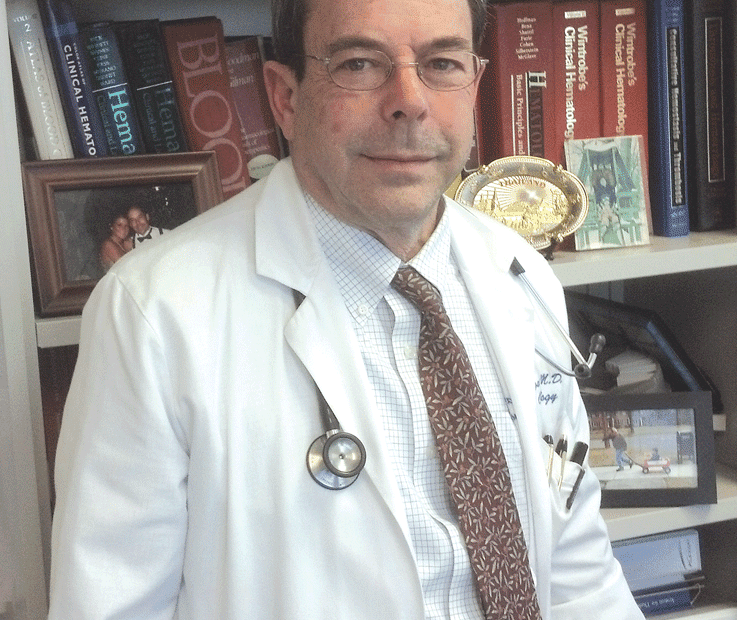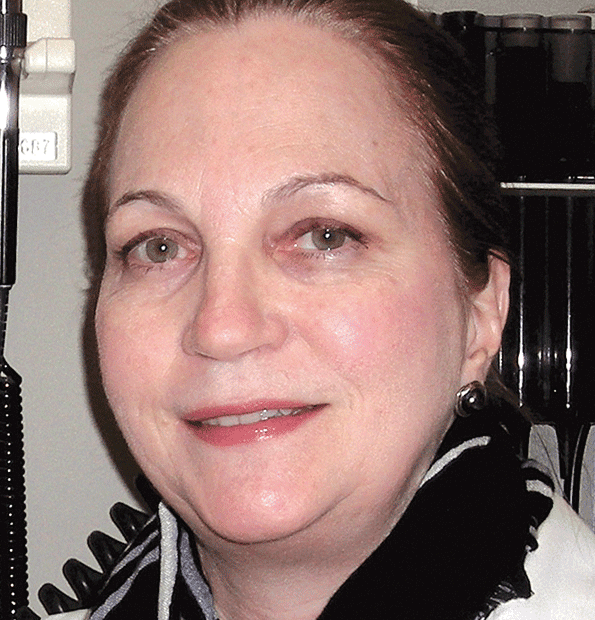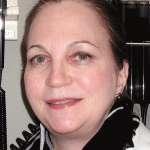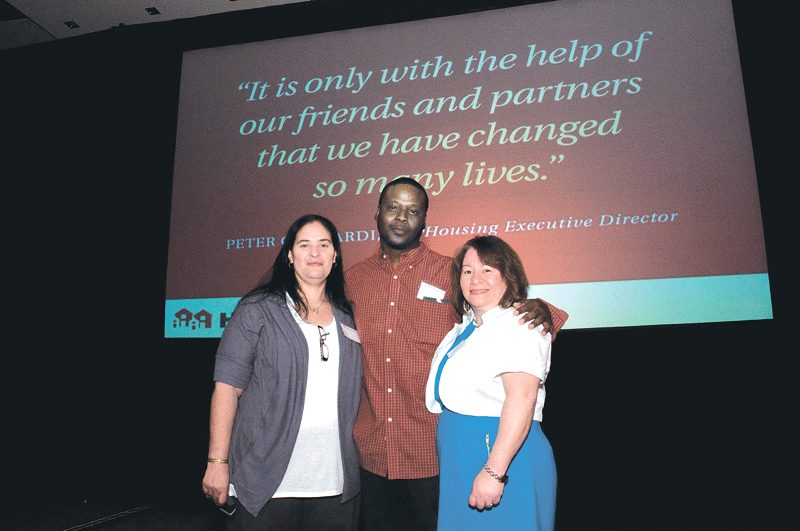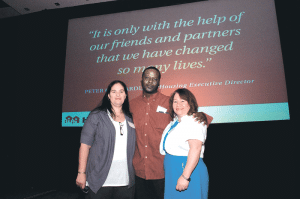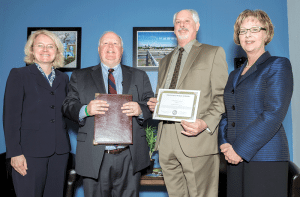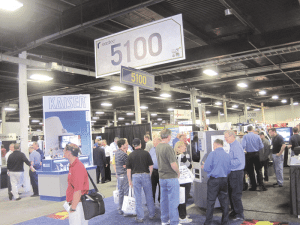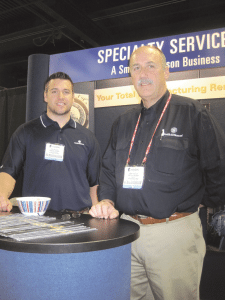The following real estate transactions (latest available) were compiled by Banker & Tradesman and are published as they were received. Only transactions exceeding $115,000 are listed. Buyer and seller fields contain only the first name listed on the deed.
FRANKLIN COUNTY
ASHFIELD
157 Steady Lane
Ashfield, MA 01330
Amount: $200,000
Buyer: Roger E. Howes
Seller: John D. Kendrick
Date: 04/08/13
BERNARDSTON
42 South St.
Bernardston, MA 01337
Amount: $213,000
Buyer: William J. McGuirk
Seller: Linda A. Morey
Date: 04/19/13
BUCKLAND
73 Avery Road
Buckland, MA 01338
Amount: $460,000
Buyer: Maya Nayak
Seller: Katherine E. Brown
Date: 04/16/13
CHARLEMONT
49 Harmony Hts.
Charlemont, MA 01339
Amount: $265,000
Buyer: Timothy Flaherty
Seller: Ronald M. Mansi
Date: 04/17/13
CONWAY
238 Warger Road
Conway, MA 01341
Amount: $511,649
Buyer: Greenfield Savings Bank
Seller: Wesley B. Rowe
Date: 04/11/13
GREENFIELD
14 Cypress St.
Greenfield, MA 01301
Amount: $127,000
Buyer: William W. Schmidt
Seller: Bruce W. Vought
Date: 04/11/13
324 Deerfield St.
Greenfield, MA 01301
Amount: $145,000
Buyer: 151 Federla Street LLC
Seller: Irene Dejackome
Date: 04/19/13
59 Fort Square
Greenfield, MA 01301
Amount: $125,000
Buyer: Edward F. Maeder
Seller: Welenc IRT
Date: 04/08/13
46 French King Hwy.
Greenfield, MA 01301
Amount: $145,900
Buyer: Teresa Conti
Seller: Stephen R. McCabe
Date: 04/16/13
19 Highland Ave.
Greenfield, MA 01301
Amount: $340,000
Buyer: Tom Friedman
Seller: Stephen Sears LT
Date: 04/08/13
142 Oakland St.
Greenfield, MA 01301
Amount: $200,000
Buyer: Tsetan D. Thingdutsang
Seller: John D. Petrin
Date: 04/19/13
12 Prospect St.
Greenfield, MA 01301
Amount: $118,500
Buyer: Stephen Poulin
Seller: Eaton FT
Date: 04/12/13
Route 2
Greenfield, MA 01376
Amount: $850,000
Buyer: Franklin Land Trust Inc.
Seller: Wesley B. Rowe
Date: 04/10/13
27 Severance St.
Greenfield, MA 01301
Amount: $154,000
Buyer: Eddie Martinez
Seller: James R. Knightly
Date: 04/12/13
ORANGE
150 Fountain St.
Orange, MA 01364
Amount: $139,900
Buyer: Aaron T. Gannon
Seller: Adam M. Bouchard
Date: 04/17/13
SUNDERLAND
166 Old Amherst Road
Sunderland, MA 01375
Amount: $218,500
Buyer: Valley Building Co. Inc.
Seller: Brandts, Cynthia L., (Estate)
Date: 04/19/13
47 South Main St.
Sunderland, MA 01375
Amount: $270,000
Buyer: Kenneth D. Arnold
Seller: Hubbard, Eleanor S., (Estate)
Date: 04/19/13
HAMPDEN COUNTY
AGAWAM
55 Annable St.
Agawam, MA 01030
Amount: $126,000
Buyer: MHFA
Seller: Joao Oliveira
Date: 04/08/13
70 Arbor Lane
Agawam, MA 01001
Amount: $231,100
Buyer: Gerard R. Boucher
Seller: Lynn A. Gelineau
Date: 04/10/13
25 Barbara Lane
Agawam, MA 01030
Amount: $237,500
Buyer: Mark A. Jamgochian
Seller: Martina Pocaterra
Date: 04/12/13
75 Fox Farm Road
Agawam, MA 01030
Amount: $174,100
Buyer: Johnathan S. Torres
Seller: Gifford, Donald L., (Estate)
Date: 04/19/13
22 Plumtree Way
Agawam, MA 01030
Amount: $350,000
Buyer: Fallah Razzak
Seller: Anthony D. Feato
Date: 04/09/13
181 Shoemaker Lane
Agawam, MA 01001
Amount: $165,274
Buyer: USA HUD
Seller: Bank Of America
Date: 04/10/13
BRIMFIELD
15 Oakwood Road
Brimfield, MA 01010
Amount: $149,836
Buyer: FNMA
Seller: Theresa R. Willoughby
Date: 04/10/13
CHICOPEE
11 Burton St.
Chicopee, MA 01013
Amount: $150,000
Buyer: Mark A. Haryasz
Seller: Patricia Cossaboom
Date: 04/10/13
378 Dale St.
Chicopee, MA 01013
Amount: $170,000
Buyer: Melissa K. Wackerbarth
Seller: Jeanne M. Boutelle
Date: 04/19/13
340 Grove St.
Chicopee, MA 01020
Amount: $213,000
Buyer: Sarah B. Fisher
Seller: Revampit LLC
Date: 04/19/13
7 Lucretia Ave.
Chicopee, MA 01013
Amount: $134,000
Buyer: Trudiann Pinnock
Seller: Brian Kolodziej
Date: 04/12/13
7 Montello Road
Chicopee, MA 01013
Amount: $145,000
Buyer: Joshua H. Laplante
Seller: Robert W. Landry
Date: 04/17/13
EAST LONGMEADOW
28 Brookhaven Dr.
East Longmeadow, MA 01028
Amount: $175,000
Buyer: Wayne D. Michaelian
Seller: John F. Ascioti
Date: 04/11/13
37 Holland Dr.
East Longmeadow, MA 01028
Amount: $121,500
Buyer: FHLM
Seller: David Evans
Date: 04/12/13
49 Holy Cross Circle
East Longmeadow, MA 01028
Amount: $240,000
Buyer: Ian A. Bracht
Seller: David G. Bareiss
Date: 04/12/13
14 Lombard Ave.
East Longmeadow, MA 01028
Amount: $170,000
Buyer: Paige Moylan
Seller: Eileen A. Verteramo
Date: 04/11/13
HAMPDEN
188 Glendale Road
Hampden, MA 01036
Amount: $167,500
Buyer: Kristin J. Desilets
Seller: Rosella Whitney
Date: 04/12/13
10 Glendale View Dr.
Hampden, MA 01036
Amount: $950,000
Buyer: Barbara A. Greco
Seller: James W. Hoerle
Date: 04/12/13
39 Mill Road
Hampden, MA 01036
Amount: $267,500
Buyer: Jonathan Caruana
Seller: Scott W. Brubach
Date: 04/12/13
HOLYOKE
14 Bray Park Dr.
Holyoke, MA 01040
Amount: $156,000
Buyer: Miguel A. Carrasquillo
Seller: Marie D. Worwood
Date: 04/19/13
18 Canby St.
Holyoke, MA 01040
Amount: $123,500
Buyer: Alexandra T. Samets
Seller: Adam R. Methot
Date: 04/17/13
38 Claren Dr.
Holyoke, MA 01040
Amount: $230,000
Buyer: Sara A. Hayden
Seller: Donald L. Kooken
Date: 04/16/13
1 Country Club Road
Holyoke, MA 01040
Amount: $2,500,000
Buyer: D Hotel & Suites Inc.
Seller: Holyoke Hotels LLC
Date: 04/16/13
1035 Homestead Ave.
Holyoke, MA 01040
Amount: $132,500
Buyer: John A. Tart
Seller: Clifford W. Laraway
Date: 04/17/13
44 Laurel St.
Holyoke, MA 01040
Amount: $140,000
Buyer: Clara W. James
Seller: Cynthia A. Teel
Date: 04/12/13
193 Sargeant St.
Holyoke, MA 01040
Amount: $155,000
Buyer: Gary W. Keefe
Seller: Nancy L. Osgood
Date: 04/11/13
5 Woodbridge St.
Holyoke, MA 01040
Amount: $242,000
Buyer: Joseph F. Griffin
Seller: Joseph F. Griffin
Date: 04/16/13
LONGMEADOW
187 Cedar Road
Longmeadow, MA 01106
Amount: $222,900
Buyer: Gloyd D. Kimball
Seller: Freya J. Wolk
Date: 04/12/13
24 Fairfield Terrace
Longmeadow, MA 01106
Amount: $175,000
Buyer: David J. Lecours
Seller: Jane F. Woodward
Date: 04/17/13
83 Laurel St.
Longmeadow, MA 01106
Amount: $399,000
Buyer: Amy Monroe
Seller: Annie L. Zomermaand
Date: 04/08/13
69 South Park Ave.
Longmeadow, MA 01106
Amount: $237,900
Buyer: Bruce D. Haskins
Seller: Lisa K. Reilly
Date: 04/19/13
119 Thresher Road
Longmeadow, MA 01036
Amount: $259,900
Buyer: Nicholas M. Tangredi
Seller: Mark G. Pearlman
Date: 04/10/13
LUDLOW
69 Aldo Dr.
Ludlow, MA 01056
Amount: $202,500
Buyer: Mark C. Howe
Seller: Scotty L. Afonso
Date: 04/16/13
Center St.
Ludlow, MA 01056
Amount: $123,000
Buyer: Jason C. Martins
Seller: Rosewood Meadows Inc.
Date: 04/17/13
253 Colonial Dr.
Ludlow, MA 01056
Amount: $290,000
Buyer: Helder D. Santos
Seller: Peter C. & Joyce A. Shaw RT
Date: 04/16/13
107 Coolidge Ave.
Ludlow, MA 01056
Amount: $117,500
Buyer: Ryan N. Merceri
Seller: Joseph A. Barbieri
Date: 04/08/13
19 Daisy Lane
Ludlow, MA 01056
Amount: $320,000
Buyer: Elin M. Zapka
Seller: Ireneu Freitas
Date: 04/11/13
N/A
Ludlow, MA 01056
Amount: $251,000
Seller: Jason C. Martins
Date: 04/17/13
181 Pine St.
Ludlow, MA 01056
Amount: $148,000
Buyer: Nicole K. Santos
Seller: Robert A. Sousa
Date: 04/19/13
MONSON
15 Hospital Road
Monson, MA 01057
Amount: $250,000
Buyer: Beesh Sports LLC
Seller: River Hollow LLC
Date: 04/17/13
14 Main St.
Monson, MA 01057
Amount: $140,900
Buyer: James P. Moran
Seller: Marc A. Pelissier
Date: 04/10/13
313 Silver St.
Monson, MA 01057
Amount: $250,000
Buyer: Christian M. Gainer
Seller: Thomas O. Moore
Date: 04/16/13
29 Stafford Road
Monson, MA 01057
Amount: $134,000
Buyer: Richard H. Casler
Seller: Debra M. Jean
Date: 04/17/13
26 Stebbins Road
Monson, MA 01057
Amount: $321,000
Buyer: David E. Cote
Seller: John P. Lanucha
Date: 04/19/13
PALMER
2090 Oak St.
Palmer, MA 01080
Amount: $152,794
Buyer: FNMA
Seller: Arlene L. Domey
Date: 04/17/13
PALMER
6 Caroline Circle
Palmer, MA 01069
Amount: $215,000
Buyer: Henry C. Lomba
Seller: Jeffrey P. Harris
Date: 04/08/13
2002 Overlook Dr.
Palmer, MA 01080
Amount: $190,000
Buyer: Louis A. Brodeur
Seller: Valtelhas, Sophie J., (Estate)
Date: 04/12/13
SPRINGFIELD
307 Arcadia Blvd.
Springfield, MA 01118
Amount: $127,500
Buyer: Donna Dunn
Seller: Barrett, Beatrice V., (Estate)
Date: 04/19/13
97 Avery St. #134
Springfield, MA 01119
Amount: $225,000
Buyer: Franklyn Torres
Seller: Elaine C. Graham
Date: 04/19/13
1333 Boston Road
Springfield, MA 01119
Amount: $230,000
Buyer: Salvatore A. Scibelli
Seller: Salvatore A. Scibelli
Date: 04/11/13
5 Caldwell Place
Springfield, MA 01104
Amount: $170,000
Buyer: Nationstar Mortgage LLC
Seller: Priscilla M. Schissel
Date: 04/17/13
149 Cooley St.
Springfield, MA 01128
Amount: $180,159
Buyer: FNMA
Seller: Kim M. Santinello
Date: 04/12/13
34 Dewey St.
Springfield, MA 01109
Amount: $132,910
Buyer: FNMA
Seller: Richard Cruz
Date: 04/11/13
180 Eddy St.
Springfield, MA 01104
Amount: $139,500
Buyer: Cynthia A. Galas
Seller: Pawel Misniakiewicz
Date: 04/08/13
117 El Paso St.
Springfield, MA 01104
Amount: $120,000
Buyer: Jessie L. Scribner
Seller: Foster, Jane M., (Estate)
Date: 04/16/13
56 Felicia St.
Springfield, MA 01104
Amount: $135,000
Buyer: Jose D. Pacheco
Seller: Henry C. Lomba
Date: 04/08/13
22 Hobart St.
Springfield, MA 01104
Amount: $170,000
Buyer: Nationstar Mortgage LLC
Seller: Priscilla M. Schissel
Date: 04/17/13
23 Mary St.
Springfield, MA 01118
Amount: $117,500
Buyer: John M. Friedson
Seller: Maroney RE Investments
Date: 04/16/13
56 Old Farm Road
Springfield, MA 01119
Amount: $120,000
Buyer: Kevin D. McCabe
Seller: Brian R. Wallace
Date: 04/17/13
43 Ontario St.
Springfield, MA 01104
Amount: $115,000
Buyer: Luis A. Torres
Seller: Jorge L. Colon
Date: 04/16/13
100 Perkins St.
Springfield, MA 01118
Amount: $151,250
Buyer: Connor M. Knightly
Seller: Julia A. Cross
Date: 04/17/13
82 Pheasant Dr.
Springfield, MA 01119
Amount: $146,000
Buyer: Dawn M. Triplett
Seller: Peter J. Ngige-Njenga
Date: 04/10/13
286 Sumner Ave.
Springfield, MA 01108
Amount: $187,500
Buyer: Nicole T. Baker
Seller: Surtan Reatly LLP
Date: 04/19/13
42 Sylvan St.
Springfield, MA 01108
Amount: $117,500
Buyer: Carmen Rodriguez
Seller: Harvey Skerker
Date: 04/09/13
23 Tanglewood Dr.
Springfield, MA 01129
Amount: $270,000
Buyer: Eric Podgurski
Seller: Thomas J. Bonavita
Date: 04/18/13
115 Wrenwood St.
Springfield, MA 01119
Amount: $176,464
Buyer: JP Morgan Chase Bank
Seller: John C. Eggleston
Date: 04/16/13
SOUTHWICK
16 Fenton Dr.
Southwick, MA 01077
Amount: $350,000
Buyer: B&E Aricraft Component
Seller: Igor Babinov
Date: 04/10/13
1 Gillette Ave.
Southwick, MA 01077
Amount: $179,000
Buyer: Donald Nooney
Seller: Carole A. Hardick
Date: 04/10/13
26 Lakeview St.
Southwick, MA 01077
Amount: $180,000
Buyer: Kelly J. Duncan
Seller: FHLM
Date: 04/12/13
TOLLAND
305 Moreau Road
Tolland, MA 01034
Amount: $2,100,000
Buyer: Shores Museum Tower QPRT
Seller: Kenneth M. Poovey
Date: 04/16/13
54 Ona Road
Tolland, MA 01034
Amount: $700,000
Buyer: Shores Museum Tower QPRT
Seller: Kenneth M. Poovey
Date: 04/16/13
WALES
32 Holland Road
Wales, MA 01081
Amount: $187,900
Buyer: David W. Fish
Seller: Steven W. Beyor
Date: 04/17/13
WEST SPRINGFIELD
30 Crestview Dr.
Amount: $207,500
Buyer: Stephen L. Holstrom
Seller: Gene J. Galuszka
Date: 04/16/13
258 Main St.
West Springfield, MA 01089
Amount: $210,000
Buyer: St.Francis De Salles LLC
Seller: Robert J. Schroeter
Date: 04/18/13
60 Mulcahy Dr.
West Springfield, MA 01089
Amount: $497,000
Buyer: Robert J. Brodeur
Seller: Francis Wheeler Construction Inc.
Date: 04/08/13
117 Sibley Ave.
West Springfield, MA 01089
Amount: $179,000
Buyer: Paul R. Dickey
Seller: Kenneth G. Aubrey
Date: 04/11/13
59 Sprague St.
West Springfield, MA 01089
Amount: $180,000
Buyer: Maria N. Ayala
Seller: RAK Realty Assocs. LLC
Date: 04/12/13
12 Therese Marie Lane
West Springfield, MA 01089
Amount: $340,000
Buyer: Svc Net Inc.
Seller: Robert J. Brodeur
Date: 04/08/13
23 Thomas Dr.
West Springfield, MA 01089
Amount: $165,000
Buyer: Vyacheslav Dadayev
Seller: David H. Stahelski
Date: 04/19/13
115 York St.
West Springfield, MA 01089
Amount: $250,000
Buyer: York Street Realty LLC
Seller: Orograin Bakeries Sales
Date: 04/18/13
WESTFIELD
215 Bates Road
Westfield, MA 01085
Amount: $230,000
Buyer: Richard A. Grabiec
Seller: John A. Wallace
Date: 04/18/13
63 Crane Ave.
Westfield, MA 01085
Amount: $174,000
Buyer: Jeremy J. Moquin
Seller: Ryan W. Taylor
Date: 04/18/13
44 Darby Dr.
Westfield, MA 01085
Amount: $270,000
Buyer: Jorge M. Delgado
Seller: Kathleen Puza
Date: 04/17/13
240 Eastwood Dr.
Westfield, MA 01085
Amount: $279,900
Buyer: Lisa A. Saltmarsh
Seller: Daniel Lech
Date: 04/12/13
75 Eastwood Dr.
Westfield, MA 01085
Amount: $290,000
Buyer: Michael F. Messier
Seller: Kevin Malloy
Date: 04/12/13
28 Fowler Road
Westfield, MA 01085
Amount: $210,000
Buyer: Geoffrey C. Oldmixon
Seller: Maureen Wrobleski
Date: 04/17/13
88 Glenwood Dr.
Westfield, MA 01085
Amount: $210,000
Buyer: Andrew J. Martindell
Seller: Corriveau, Joanne F., (Estate)
Date: 04/09/13
59 Llewellyn Dr.
Westfield, MA 01085
Amount: $290,000
Buyer: Alexandra M. Tremblay
Seller: Stanley W. Stevens
Date: 04/17/13
10 Madison St.
Westfield, MA 01085
Amount: $128,900
Buyer: Charles Michaud
Seller: Bertrand, Patricia A., (Estate)
Date: 04/12/13
20 Oak Ave.
Westfield, MA 01085
Amount: $199,500
Buyer: Paul J. Boulanger
Seller: Genovese, Samuel C., (Estate)
Date: 04/10/13
155 Paper Mill Road
Westfield, MA 01085
Amount: $175,000
Buyer: Seth Lamountain
Seller: Kimberly L. Gibney
Date: 04/16/13
155 Root Road
Westfield, MA 01085
Amount: $284,000
Buyer: Kevin W. Connolly
Seller: April J. Williams
Date: 04/11/13
49 Rosedell Dr.
Westfield, MA 01085
Amount: $205,000
Buyer: Michele L. Cardinal
Seller: Rosetta Grimm
Date: 04/16/13
130 Shaker Road
Westfield, MA 01085
Amount: $290,000
Buyer: Marc J. Longtin
Seller: Catherine C. Berry
Date: 04/19/13
37 Summit Dr.
Westfield, MA 01085
Amount: $202,900
Buyer: Orlando Huertas
Seller: Daniel H. Knights
Date: 04/19/13
22 Wood Road
Westfield, MA 01085
Amount: $182,000
Buyer: Lance M. Phillips
Seller: Douglas E. Allard
Date: 04/12/13
124 Woodcliff Dr.
Westfield, MA 01085
Amount: $409,000
Buyer: Timothy J. Williams
Seller: Carolyn M. Hartt
Date: 04/11/13
WILBRAHAM
9 Brookside Dr.
Wilbraham, MA 01095
Amount: $215,000
Buyer: Patricia E. Perkins
Seller: Warren E. Newhouse
Date: 04/19/13
1 McIntosh Dr.
Wilbraham, MA 01095
Amount: $314,250
Buyer: Brian P. O’Connor
Seller: Paul A. Schreiner
Date: 04/16/13
28 Red Bridge Road
Wilbraham, MA 01095
Amount: $289,900
Buyer: Jeff W. Farnsworth
Seller: Robert G. Table
Date: 04/16/13
10 Stonington Dr.
Wilbraham, MA 01095
Amount: $170,000
Buyer: Peter D. Martins
Seller: Silo Farm Assocs. LLC
Date: 04/09/13
635 Stony Hill Road
Wilbraham, MA 01095
Amount: $180,000
Buyer: Masada RT
Seller: Michael J. Sambor
Date: 04/10/13
HAMPSHIRE COUNTY
AMHERST
48 Dana St.
Amherst, MA 01002
Amount: $367,500
Buyer: George D. Nichols
Seller: Patrick E. Brock
Date: 04/17/13
186 Harkness Road
Amherst, MA 01002
Amount: $425,000
Buyer: Servicenet Inc.
Seller: James J. Bess
Date: 04/17/13
112 Heatherstone Road
Amherst, MA 01002
Amount: $340,000
Buyer: Elizabeth B. Parker
Seller: Ivan S. Chow
Date: 04/12/13
241 Pomeroy Lane
Amherst, MA 01002
Amount: $338,000
Buyer: Courtney J. Platt
Seller: George, John W., (Estate)
Date: 04/12/13
BELCHERTOWN
72 Amherst Road
Belchertown, MA 01007
Amount: $125,000
Buyer: Marian T. Goodhin
Seller: Brenda M. Martin
Date: 04/09/13
17 Bay Path Road
Belchertown, MA 01007
Amount: $199,300
Buyer: Vincent J. Tran
Seller: US Bank NA
Date: 04/17/13
6 Country Lane
Belchertown, MA 01007
Amount: $168,500
Buyer: Gregg D. Wing
Seller: Stephen F. George
Date: 04/12/13
48 Fletcher Ave.
Belchertown, MA 01007
Amount: $335,000
Buyer: Keith M. Frazier
Seller: Michael F. Kobus
Date: 04/12/13
Gold St.
Belchertown, MA 01007
Amount: $500,000
Buyer: Town Of Belchertown
Seller: Kestrel Land Trust
Date: 04/10/13
154 Gold St.
Belchertown, MA 01007
Amount: $295,000
Buyer: Tina L. Agustine
Seller: Tony P. Hill
Date: 04/18/13
62 Mountain View Dr.
Belchertown, MA 01007
Amount: $250,000
Buyer: Kyle Savage
Seller: Delfina M. Stevens
Date: 04/12/13
40 Oakridge Dr.
Belchertown, MA 01007
Amount: $334,900
Buyer: Allan A. Ruell
Date: 04/17/13
CUMMINGTON
3 Bates Road
Cummington, MA 01026
Amount: $157,593
Buyer: FNMA
Seller: William Lefleur
Date: 04/16/13
EASTHAMPTON
8 Arthur St.
Easthampton, MA 01027
Amount: $180,000
Buyer: James Duffy
Seller: Chad E. Gagne
Date: 04/10/13
21 Exeter St.
Easthampton, MA 01027
Amount: $180,000
Buyer: Lindsay R. Barron
Seller: Stanley J. Kwiecinski
Date: 04/12/13
7 Lownds Ave.
Easthampton, MA 01027
Amount: $192,000
Buyer: Steven M. Bilodeau
Seller: Joshua D. Driver
Date: 04/08/13
O’Neil St.
Easthampton, MA 01027
Amount: $400,000
Buyer: Easthampton Savings Bank
Seller: Autumn Props. LLC
Date: 04/19/13
36 Strong St.
Easthampton, MA 01027
Amount: $242,000
Buyer: Todd T. Dineen
Seller: John B. Anz
Date: 04/18/13
3 Summit Ave.
Easthampton, MA 01027
Amount: $146,000
Buyer: Lori J. Carrier
Seller: Pauline E. Carrier
Date: 04/12/13
65 Taft Ave.
Easthampton, MA 01027
Amount: $225,000
Buyer: Sage C. McKnight
Seller: Patricia H. Nadeau
Date: 04/17/13
36 Ward Ave.
Easthampton, MA 01027
Amount: $175,400
Buyer: Eve S. Eichwald
Seller: Julie A. Laurence
Date: 04/08/13
14 Water Lane
Easthampton, MA 01027
Amount: $140,000
Buyer: Katie M. Spaulding
Seller: Wilfred J. Buri
Date: 04/08/13
40 West St.
Easthampton, MA 01027
Amount: $180,000
Buyer: Bialy Dom Farm LLC
Seller: Diane K. Grzeskowicz
Date: 04/08/13
GRANBY
7 Greenmeadow Lane
Granby, MA 01033
Amount: $150,100
Buyer: Kevin R. Gendreau
Seller: FNMA
Date: 04/16/13
16 Hubbard Dr.
Granby, MA 01033
Amount: $170,000
Buyer: Donald L. Derosia
Seller: Country Bank for Savings
Date: 04/10/13
129 South St.
Granby, MA 01033
Amount: $225,000
Buyer: Kevin J. Whitacre
Seller: Gail D. Cosby
Date: 04/16/13
HATFIELD
115 Elm St.
Hatfield, MA 01038
Amount: $240,000
Buyer: Florence M. Brisbois
Seller: Hatfield Village LLC
Date: 04/19/13
HUNTINGTON
4 Birchwood Dr.
Huntington, MA 01050
Amount: $130,000
Buyer: Kevin A. Perrier
Seller: Crown Meadow Corp.
Date: 04/12/13
NORTHAMPTON
77 Emerson Way
Northampton, MA 01062
Amount: $449,000
Seller: Wright Builders Inc.
Date: 04/16/13
Emerson Way
Northampton, MA 01060
Amount: $115,000
Buyer: Hampshire Property Mgmt. Group
Seller: Emerson Way LLC
Date: 04/18/13
28 Fox Farms Road
Northampton, MA 01062
Amount: $362,000
Buyer: Christopher R. Amato
Seller: Patrick J. Mahoney
Date: 04/16/13
Front St.
Northampton, MA 01060
Amount: $282,500
Buyer: Colin J. Hoyt
Seller: Shel Horowitz
Date: 04/08/13
43 Rick Dr.
Northampton, MA 01062
Amount: $232,000
Buyer: Bonnie S. May
Seller: Renee A. Ceno
Date: 04/19/13
49 Woodlawn Ave.
Northampton, MA 01060
Amount: $415,000
Buyer: Joel W. Wolfe
Seller: Margaret S. Zelljadt
Date: 04/19/13
SOUTH HADLEY
35 Applewood Lane
South Hadley, MA 01075
Amount: $230,000
Buyer: Michael F. Kobus
Seller: Tonelli, Raymond J., (Estate)
Date: 04/12/13
45 Ashton Lane
South Hadley, MA 01075
Amount: $345,000
Buyer: John B. Anz
Seller: Joni H. Zubi
Date: 04/18/13
7 Cedar Rdg
South Hadley, MA 01075
Amount: $305,000
Buyer: Joshua D. Driver
Seller: Elizabeth Mazzocco
Date: 04/08/13
46 East Red Bridge Lane
South Hadley, MA 01075
Amount: $409,000
Buyer: David W. Scruggs
Seller: J. N. Duquette & Son Construction
Date: 04/19/13
42 Hillside Ave.
South Hadley, MA 01075
Amount: $165,000
Buyer: Nicholas Dube
Seller: Adam Boyer
Date: 04/12/13
60 Pearl St.
South Hadley, MA 01075
Amount: $221,568
Buyer: Robert A. Carrier
Seller: Alexander Desrosiers
Date: 04/17/13
36 Red Bridge Lane
South Hadley, MA 01075
Amount: $428,900
Buyer: Scott G. Newman
Seller: J. N. Duquette & Son Construction
Date: 04/12/13
SOUTHAMPTON
67 Gllbert Road
Southampton, MA 01073
Amount: $380,000
Buyer: Joy A. Tailefer
Seller: Czelusniak Custom Homes
Date: 04/18/13
WARE
43 Moriarty Road
Ware, MA 01082
Amount: $232,000
Buyer: Melissa L. Kratovil
Seller: Lisa M. Kerr
Date: 04/19/13




